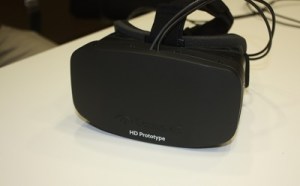GamesBeat: What are the tech things that would keep you up at night, the challenges that create risk for the company?
Cronce: Luckily, after close to 25 years, I can still go to sleep. [laughs] But I’d say the larger issues include trying to deal with much more complicated online systems than we’ve dealt with in the past. We’ve always liked the idea where the server side of the game has foreknowledge about what’s happening in the game, so we can maximize the number of players in it and make it into a living world. Most of the people in the game industry have done that by buying bigger and faster hardware and doing it all locally. The new challenge is that we have to now break up those problems into smaller pieces.
It’s similar to what you saw when we had to move to multiple cores in the PS3 and Xbox 360 days. We’re now having to figure out how to do that with servers, and it’s slightly different. How do you break your logic of your game, which is normally running on heavy hardware in a backend server, into a bunch of smaller virtual components that are all running on cloud systems like Amazon?
GamesBeat: Is everybody going that way? Microsoft is the one that’s talked about cloud processing.
Cronce: Very few people, I think, are heavily investing in it right now. It’s something that we see as a challenge that we have to solve, in two ways. We don’t want to run our own server hardware, but we have to do so today. There isn’t anything out there that’s approaching the type of low latency that our gamers require. But we think that the horizon is changing. We’re in a model where we’re not going to be able to buy the hardware necessary to have thousands or hundreds of thousands of people playing at the same time.
That’s on one side. The other side is the mobile, free-to-play market. You don’t want to build a server system where you’re spending a whole bunch of money supporting all the people who aren’t actually paying for the game. It’s both a cost issue and a technology issue when you’re thinking about free-to-play.
 GamesBeat: The problems that SimCity had, did they educate you guys in some way about where things are going?
GamesBeat: The problems that SimCity had, did they educate you guys in some way about where things are going?
Cronce: We always learn from our mistakes. Same thing with The Simpsons: Tapped Out when it originally came out. What that says is that we, as an industry creating games, haven’t mastered that kind of broad server-side scalability. You see that from everybody. Almost always, when a large online game comes out, there are troubles in the first week or so.
GamesBeat: That was hard for me to understand from the outside. We hear all the rhetoric, at least, about things like Amazon Web Services, which was built to alleviate these kinds of crushes. You can go get some computing power from them if there’s a peak in demand that your own servers can’t handle.
Cronce: That’s right. But what happens is that sometimes, there’s nothing like a good live demo to let you know when a portion of the architecture isn’t scalable. If you have anything that’s not scalable, then it doesn’t matter how many VMs you spin up. You’re not going to be able to solve the problem.
It’s the same thing you see on websites. Somebody says you’re going to build a new fancy car this way, you get a few million hits, and boom, the website goes down. One piece that nobody thought about turns out to be the core. It’s not just a games problem. But it is unique to games because we actually have to have a different kind of realtime low-latency backend, and it has to be scalable. That’s the biggest challenge virtual machines that we all face, as well as adding features into those cloud pieces.
You want to have an entire living world. We have to do this in a way that’s easy to scale, and also not too expensive per user, especially in a free-to-play system. We have to think about compute power per user. How much is it going to cost to deploy a game where some fraction of the audience will pay you money?
GamesBeat: Does anything interest you here at Siggraph that relates to games, that’s coming from another part of the industry? People always make that comparison about how the gamemakers have to reinvent their camera every few years or so. Things have been stable in the movie industry so long that it enables a more sophisticated level of creation. It isn’t held back by having to learn new technology.
Cronce: It’s true that the output for movies is at a much slower cadence. But I think the bigger thing is that whatever we end up doing has to be in real-time. In the movies, because of the amount of time they have to go back and redo things, you could hand-touch every single frame if you needed to and make it look perfect. We have to ship a game that runs in real-time, all the time. That’s a much bigger difference. Then it’s an added complexity that our devices change on a regular basis.
GamesBeat: Ubisoft opened up a motion-pictures division. It seems to suggest that the technologies could be converging.
Cronce: With the tools we’ve had in gen 3, definitely. You see a lot of the same artists move back and forth between movies and games. The animation tools that they use are identical. What happens is that a lot of the base models are pretty much the same. Ours, by the time we’re running them in-game, are much lower in resolution, with fewer polygons, but the tools we use at that base level are the same. It’s just that the pipelines for getting those models into a movie and getting them into a game are different.
GamesBeat: There are still some things coming out of left field for games, like the Oculus Rift. It’s gotten everyone excited about virtual reality again. Is that something you guys look at as well?
Cronce: Definitely. The first game we did with VR was with a VX-1 helmet. We did a couple of flight sims with it. The difference back then is that they were so expensive. In the ‘90s you had a $700 or $800 helmet with a 320 resolution. It wasn’t very compelling. What we’re seeing now is the hope that these companies will come out with a compelling VR system that’s relatively inexpensive and high-resolution. Right now we don’t know whether it will be like the other dozen or so that have come in the past, or whether it’ll actually be a breakthrough that people want to use.
GamesBeat: It seems like your due diligence on tech must be busier than ever, with all kinds of things coming out now. You have GameStick, Ouya, Oculus Rift, lots of Android things.
Cronce: Every day something new pops up. It’s more around what you decide not to support. We see even more of these Android consoles in Asia than what we see in the news in the U.S. The question is, which one will actually spend the money to become a platform? That’s more than just commodity hardware and software. It means building the platform from a developer point of view, a consumer point of view, and a marketing point of view.
It’s very exciting. Some of these are exciting just for developers to play around with, even if they don’t believe they’ll become the next big thing.
VentureBeat's mission is to be a digital town square for technical decision-makers to gain knowledge about transformative enterprise technology and transact. Learn More




